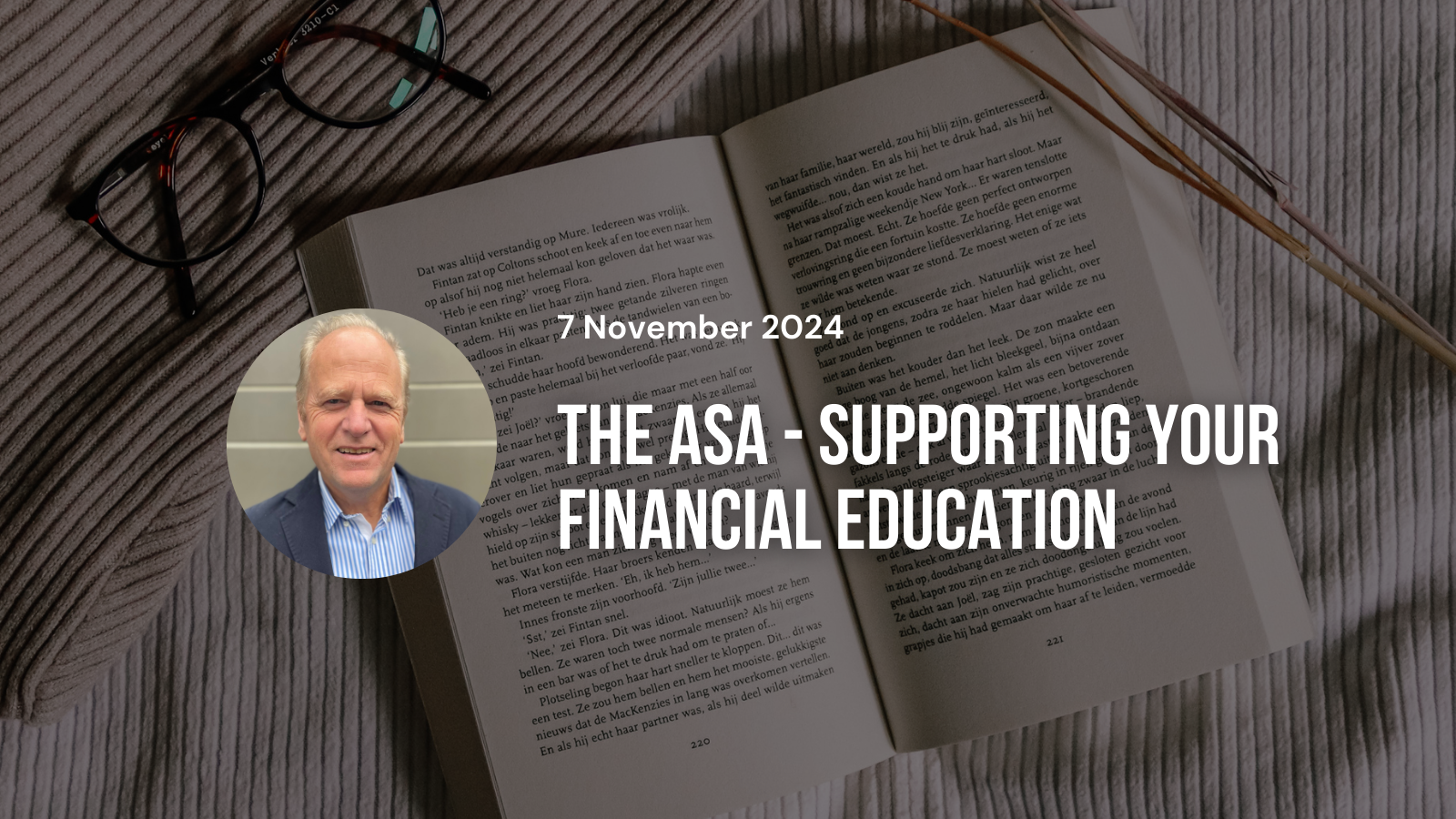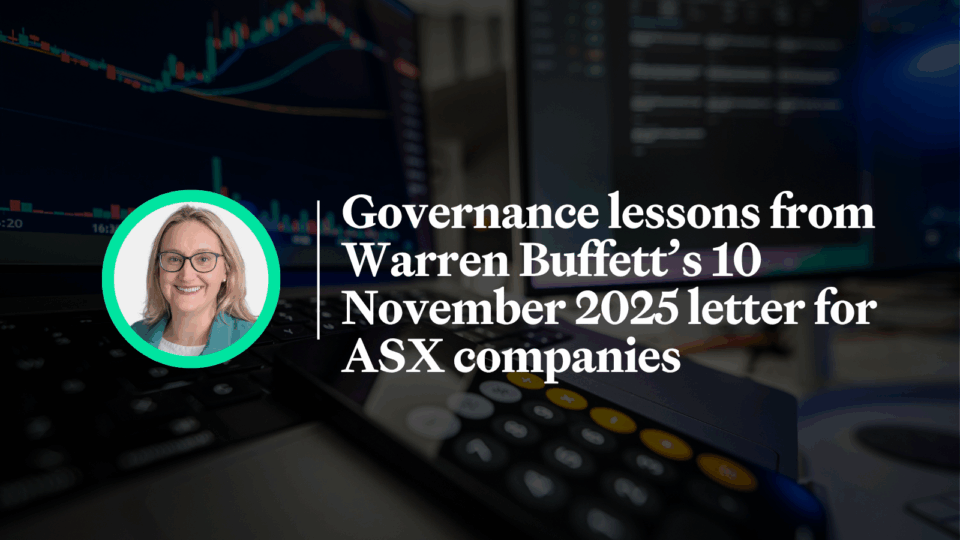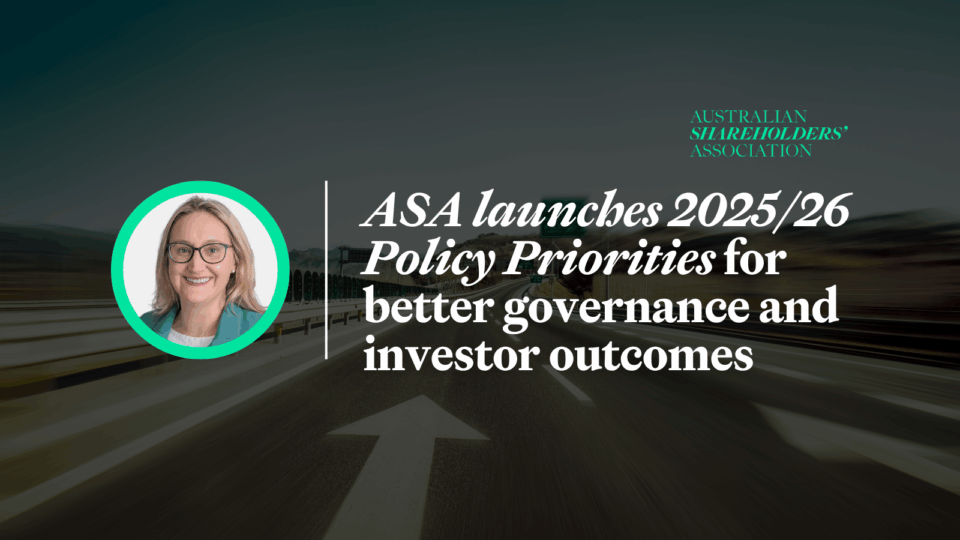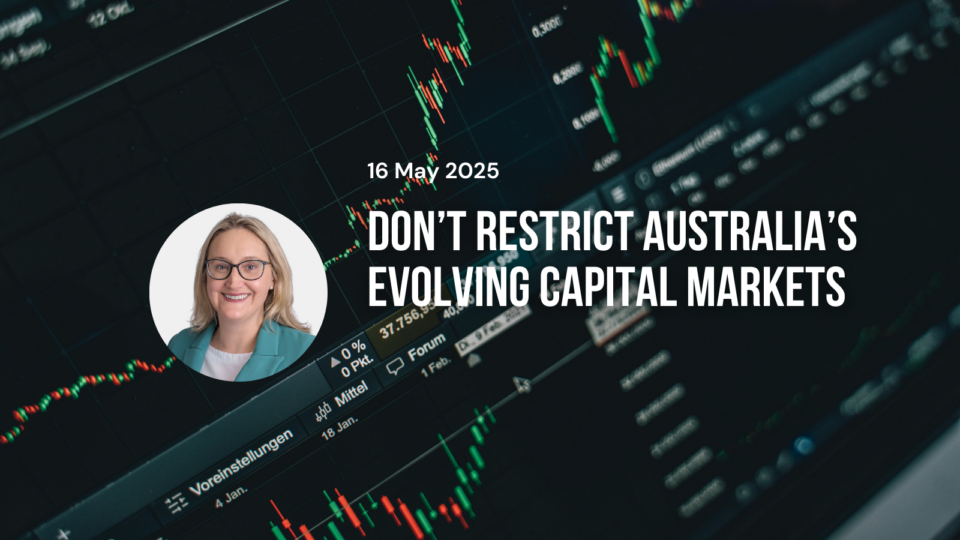
By Michael Kemp, Author of “The Ulysses Contract” and ASA Education Partner | 7 November 2024
Let me kick this article off by introducing myself. My name is Michael Kemp and I have recently been appointed as an ASA Education Partner. That means you’ll be hearing from me on a semi-regular basis in Equity Magazine. Also, my head will be popping up at the occasional ASA meeting as well as the annual ASA conference. By way of back ground I’ve worked over the years both in corporate finance and as a financial analyst. In more recent times I’ve written three finance books. Introduction over, let’s now talk about how best to further your investment education.
Education is clearly a central theme for the Australian Shareholders’ Association. The ASA articulates its mission as to champion the cause of retail investors, to shape public policy, and to promote better corporate governance. But equally as important, it aims to support its members through unbiased investment education.
Let me take that last sentence by the horns, since it’s the part of the ASA’s mission statement that’s in my wheel house.
Unfortunately, there is a mountain of biased and self-serving noise out there which masquerades as education. With that in mind it’s essential that education delivered under the ASA banner embraces three qualities; for it to be “factual”, “valid” and “unbiased”.
There are challenges to achieving that ideal in the world of finance. Unlike the scientific world concepts in finance are often vague, undefinable and unproveable. As Professor Meir Statman wrote in his book What Investors Really Want, “The world of investments is different from the world of the movies because it offers no clear boundary between fact and fiction”.
This problem of factual opacity is further compounded by two powerful human traits. First up is our intolerance of any knowledge vacuum and secondly our avid willingness to fill that void with explanations that don’t withstand the most basic rules of logic. Evolution has delivered each of us with a “believing brain”. It means that we believe first and ask questions later, if at all. It’s an evolutionary handicap that we need to actively work against if we want to become wiser investors.
As an example, we pay far too much attention to the narrative-encased opinions of forecasters, economists and falsely confident pundits who are usually in no better a position to opine about the future than we are. Study after study has shown their forecasts to be no more insightful than a reading of the tea leaves, yet still we pay attention.
What should you learn in order to become a better investor?
Warren Buffett famously said that if he was the head of a business school then he’d only have two subjects on the curriculum. They were how to value a business and how markets move. What’s telling are the subjects that he would leave out. Recognised business subjects like economics, modern portfolio theory and econometrics wouldn’t get a look in. But the important thing to note is that the two subjects Buffett would choose suit his style of investing. What then about the countless other ways that punters choose to interact with the financial markets? By that I mean everything from momentum trading to market timing to Dow Theory to data mining. What do these people need to learn?
Take for example one of the most successful investors of all time, Jim Simons (yeah, I know, he was actually a trader). For decades his outfit, Renaissance Technologies, blew Buffett’s returns into the weeds. It had a headcount of 250 back in 2010. Sixty had PhDs in non-finance related areas. Few knew what a balance sheet was. Even fewer knew how to actually interpret one.
There’s yet another thing you need to answer before embarking on your programme of learning. Before adopting any method of interacting with the market you need to establish whether that method actually works. Too many people simply skip this step. For them false belief trumps available evidence. There are countless investing and trading systems pursued out there that simply don’t work. And if you think that no one would ever pursue a losing system then just go down to any casino or Leagues Club and do a head count of those playing the poker machines.
Standing on the shoulders of giants
Business writer Jim Grant once described the stark difference between knowledge in financial markets and knowledge in science. He described stock market knowledge as being cyclical and scientific knowledge as cumulative. What Grant meant is that little of the knowledge in financial markets is concrete, so not much sticks. This contrasts with science where successive generations of scientists build on prior evidence-based knowledge. This was well articulated three centuries ago by the famous English scientist Sir Isaac Newton when he said, “If I have seen further, it is by standing on the shoulders of giants.”
This doesn’t happen in finance. The history books are littered with stories of investors who made exactly the same mistakes that investors make today, and certainly will continue to make into the future.
In the world of finance little can be proven absolutely. Finance is a vague and hazy world where decisions are made today based on a biased and imperfect reading of a future that has yet to happen… or not! We believe what we choose to believe and ignore the rest because we think we know better.
It’s all a classic case of Spinoza’s Conjecture where the mere comprehension of a statement entails the tacit acceptance of its being true, whereas disbelief requires a subsequent process of rejection. The Dutch philosopher Spinoza made this observation in the seventeenth century but recent research undertaken by US psychologist Michael Shermer and neuroscientists Sam Harris, Sameer Sheth and Mark Cohen has backed him up. As Michael Shermer has concluded, “The scientific principle of the null hypothesis – that a claim is untrue unless proved otherwise – runs counter to our natural tendency to accept as true what we can comprehend quickly”.
It’s why we interact with financial markets in a way that was well described by Demosthenes more than 2,000 years ago: “For what each man wishes, that he also believes to be true”.
Serious investors should ignore their ingrained tendency to automatically accept “credible” narratives as fact, instead behaving as Sir Francis Bacon implored us to do 400 years ago: “Doubt all before you believe anything”.
Ignore History at your Peril
I read a lot of old (sometimes very old) finance books. They are eye-opening.
Widely acknowledged as the first book written specifically about stock market operations, Joseph de la Vega’s 1688 classic, Confusion de Confusiones, describes the behaviour of investors and traders on Amsterdam’s 17th century Stock Exchange. De la Vega wrote, “These stock exchange people are quite silly, full of instability, insanity, pride and foolishness. They will sell without knowing the motive; they will buy without reason.”
Widely quoted, but in no way original, Benjamin Graham expressed the same sentiment almost three centuries later in The Intelligent Investor when he wrote, “The investor’s chief problem – and even his worst enemy – is likely to be himself”.
De la Vega’s observations were insightful, but were they educational? Did they initiate change in investor’s behaviour, to render them more rational? It appears not. There are many comments in De la Vega’s book where he could well have been describing the behaviour of modern investors. It reinforces the point that studies, writings and information through the centuries have failed to educate most investors.
Another example is delivered by Warren Buffett’s well-worn quip that investors should “be fearful when others are greedy and greedy when others are fearful.”
Far from this pithy bite of wisdom being either contemporary or original let’s hear from Francis Hirst who wrote two generations earlier, in fact in 1911, that, “A man really seems to require an unusual amount of courage to buy freely when securities are cheap, and none at all to buy when they are dear.”
Winding back to 1870, a full generation before Hirst, James Medbery wrote, “You will find confidence where the registry shows there should have been distrust, hesitation which ought to have been daring, doubts where faith would have been wealth.”
Now let’s wind the clock back several generations before Medbury. De la Vega wrote in 1688 that, “He who knows how to endure blows without being terrified by the misfortune resembles the lion who answers the thunder with a roar, and is unlike the hind who, stunned by the thunder, tries to flee.”
Clearly no one has been standing on the shoulders of giants here. Investors today still flee like stunned hinds when markets get wobbly.
Education is best sought from independent sources
As they say in life, there is no interest like self-interest. And self-serving behaviour is alive and well in financial markets. Take, for example, fund managers. There is one thing that all fund managers want… and that’s more funds under management. When their fees are driven by a percentage-based model then more FUM leads to a healthier bottom line.
This incentive leads to blatant self-promotion in the form of cherry picking limited sub-periods of outperformance and the presentation of favourable league table performance when pure luck was the determinant of the outcome.
But here’s the thing: in the extremely rare event that a fund manager does possess genuine market beating skill, then they would be foolish to share their methodology with other investors. As Bernard Baruch said, “Something that everyone knows isn’t worth knowing.”
This leads to the dilemma of fund managers standing before an audience in the name of education. Standard and Poor’s SPIVA research shows us quite clearly that most don’t possess market beating skill. And those that potentially do are unlikely to share it with an audience. My experience of fund manager presentations is that they are treated largely as an exercise in public relations.
We judge the message on the basis of its delivery, not its validity
In the absence of an ability to judge the credibility of a message we resort to other means of judgment.
We like our presenter to be articulate, confident, to deliver a credible narrative and to be well dressed (no one would pay attention to someone dressed in a Ronald McDonald suit). Yet all the while the message being delivered could be a total fiction. For proof of our susceptibility to the manner in which a message is delivered, rather than its content, look no further than Orson Welles’ 1938 radio broadcast “The War of the Worlds”. Welles, with his authoritative baritone voice, delivered his fiction in the style of a live news broadcast. He convinced a number of his radio listeners that planet Earth was in the process of being invaded by Martians.
Points to assist in developing a sound educational framework
Let me finish up with some basic rules to follow as you navigate the hazy world of finance in pursuit of your own financial education:
- Heed Sir Francis Bacon’s advice, “Doubt all before you believe anything”.
- Dial down the emotion.
- Start thinking part scientist and part businessperson.
- Trust statistics not narratives.
- Trust facts, not opinions.
- Heed credible peer reviewed academic research. Look to studies such as the Dalbar studies, the SPIVA research from Standard & Poor’s. Alternatively, or in addition to, heed those who base their writings on credible research such as John Bogle, Howard Marks, Jason Zweig, Warren Buffett and Chris Leithner (to name but a few).






